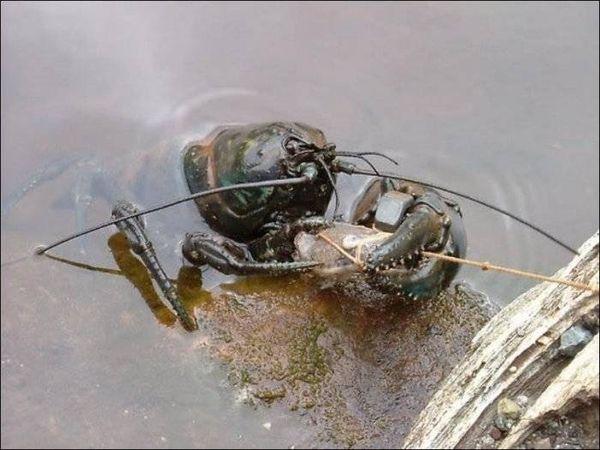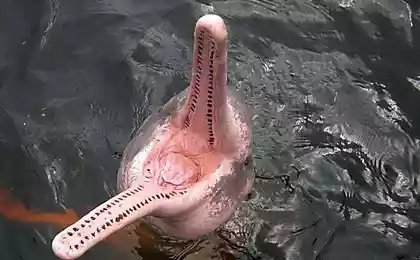8054
Giant crayfish Tasmania
In the rivers of Tasmania's largest freshwater crayfish live in the world - Astacopsis gouldi.
In the past, this type cancers reach 80 inches in length and weigh more than five pounds.
Now these are not major meet, the average size of 40-60 inches in length and weighs 3.4 kilograms.

They live in the north of Tasmania, in the quiet tree-lined rivers and streams with a very clean, oxygenated, water whose temperature does not drop below 18 degrees Celsius. Cancers differ in color, which depends on the habitat. Since the color may vary from brown to greenish blue. But there are absolutely blue birds.

Astacopsis gouldi - centenarians. Their age can be up to 40 years! And they have a very long reproductive process. Reproductive age in males comes in 9 years, women - 14 years. Crayfish male contain "harem" of several females. Breeding progeny occurs once in two years.

Due to over-fishing in the rivers and agricultural activities, reduces the quality of water in rivers, crayfish lost part of their habitat. At the end of the 20th century, this kind of recognized endangered and the Australian Government passed a law prohibiting the catch crayfish without special permission. Otherwise - a fine of $ 10 000.

Source: dimka-jd.livejournal.com
In the past, this type cancers reach 80 inches in length and weigh more than five pounds.
Now these are not major meet, the average size of 40-60 inches in length and weighs 3.4 kilograms.

They live in the north of Tasmania, in the quiet tree-lined rivers and streams with a very clean, oxygenated, water whose temperature does not drop below 18 degrees Celsius. Cancers differ in color, which depends on the habitat. Since the color may vary from brown to greenish blue. But there are absolutely blue birds.

Astacopsis gouldi - centenarians. Their age can be up to 40 years! And they have a very long reproductive process. Reproductive age in males comes in 9 years, women - 14 years. Crayfish male contain "harem" of several females. Breeding progeny occurs once in two years.

Due to over-fishing in the rivers and agricultural activities, reduces the quality of water in rivers, crayfish lost part of their habitat. At the end of the 20th century, this kind of recognized endangered and the Australian Government passed a law prohibiting the catch crayfish without special permission. Otherwise - a fine of $ 10 000.

Source: dimka-jd.livejournal.com























